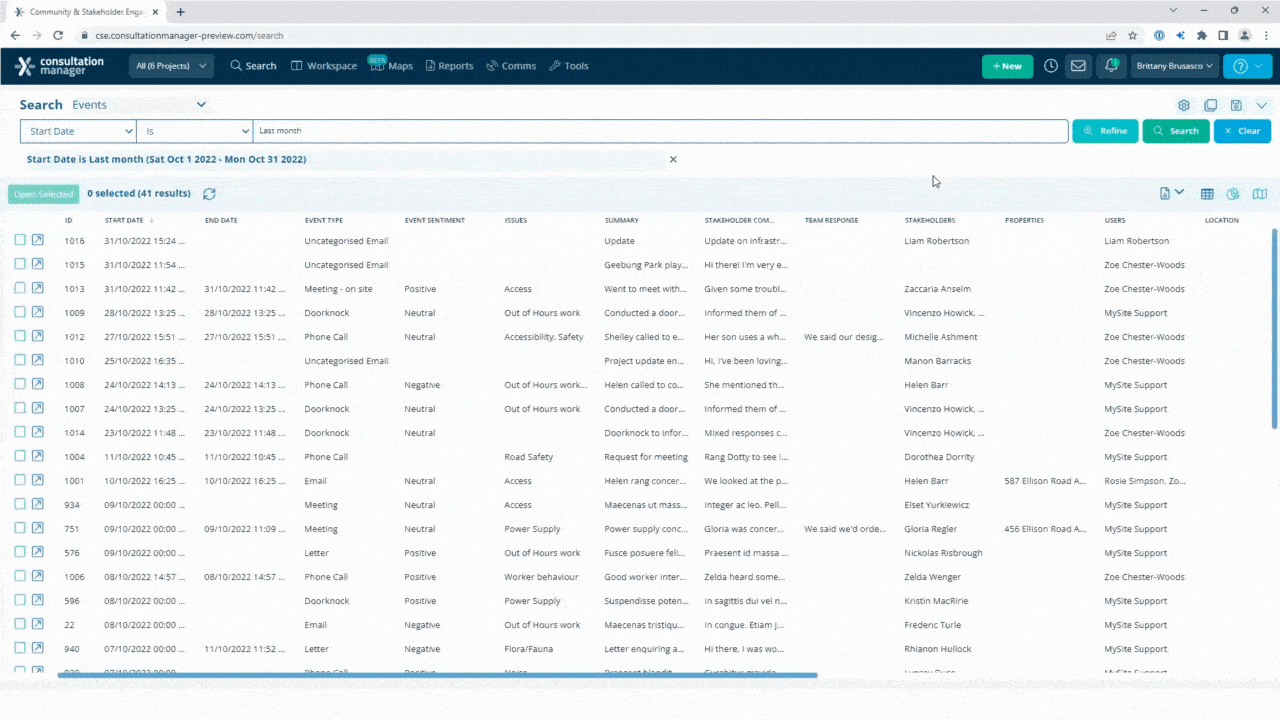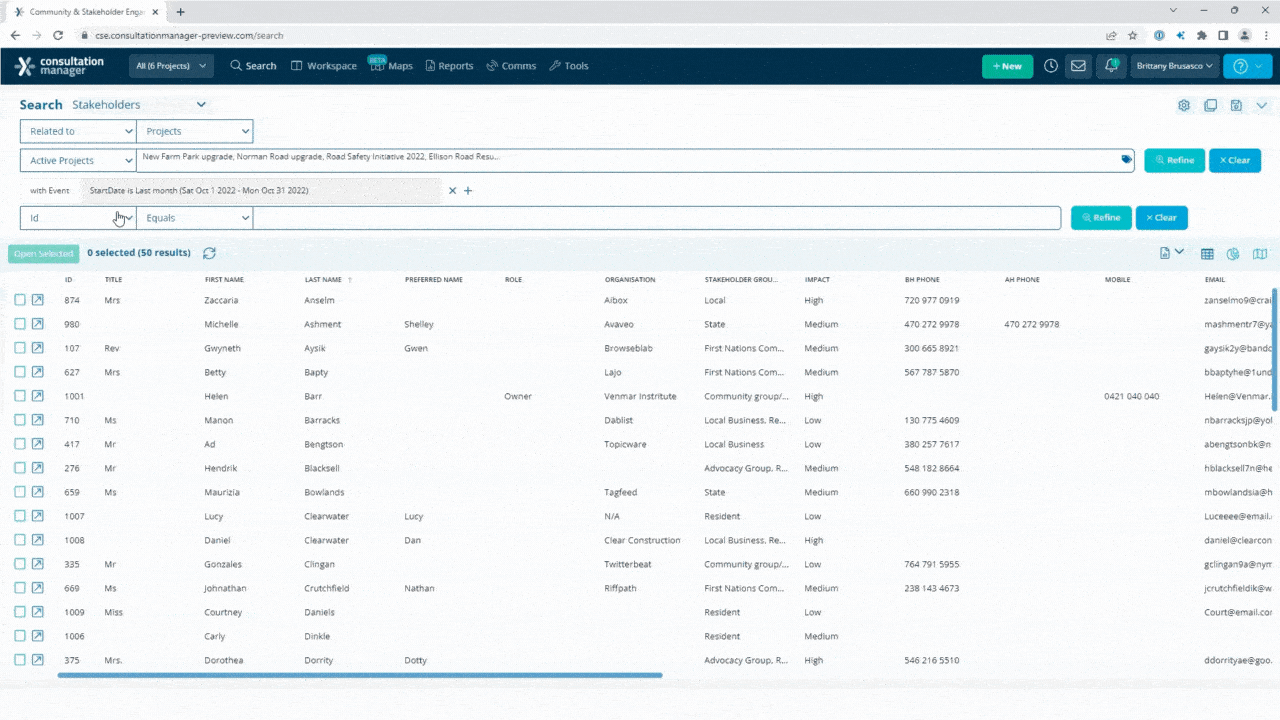When you’re working on a major project, it’s likely that you’ll encounter conflicting stakeholder needs. Every stakeholder has their own agenda and your project may or may not be in alignment with their priorities. If sentiment is negative, it’s crucial to acknowledge rather than ignore the feedback.
Stakeholder and community pressures are one of the top causes of project delays and maintaining a social license to operate has never been more important.
That’s why it’s so important to listen to stakeholder feedback, even when it’s not so positive. The feedback from stakeholders who feel negatively about your project can be highly valuable and these groups of people should be listened to.
Beyond providing valuable input, they can also alert your project team to risks and considerations that you may not have thought of yet. If you don’t listen and respond to them, they could also rise up and resist your project in the final hour.
When stakeholder sentiment is negative, you need to communicate carefully and empathetically. You don’t have to force people to feel happy about your project, but you do need to at least gain their consensus so that your project can move forward smoothly.
Here is a six-step process that you can follow using a stakeholder relationship management (SRM) platform to ensure that you are empathetically communicating with stakeholders who are displaying negative sentiment.
- Set up stakeholder sentiment tracking.
- Identify how stakeholders are feeling.
- Find out why stakeholder sentiment is negative.
- Consult your stakeholder communications plan and generate a response.
- Distribute your communications with the right stakeholders.
- Continue tracking sentiment and monitor the effectiveness of your engagement efforts.
1. Set up stakeholder sentiment tracking.
When you have an SRM in place, you can store all of your stakeholder interactions in a central platform. You need to create a stakeholder data management strategy with your team, and then ensure that all stakeholder interactions are being tagged with either positive, neutral, or negative sentiment.
Your stakeholders should also be able to easily share their feedback with you, so make sure that your contact details are easily available and implement webforms to easily capture stakeholder feedback online.
Using your tags and classifications, you can then easily create segments of stakeholders that you specifically want to track, as well as a weekly report or dynamic dashboard that measures the sentiment and top issues expressed by various stakeholder groups over time.
2. Identify how stakeholders are feeling.
Once your data management strategy and reports are set up, you will easily be able to identify when negative stakeholder sentiment is emerging.
You can also view your data in a variety of different formats to pinpoint where it is coming from. For example, negative sentiment could be arising from particular stakeholder segments, locations, or interactions.
You can view sentiment through your stakeholder segments to assess whether negativity is located within particular groups or more widespread. If particular segments are providing more negative feedback, then you may need to investigate their feedback and qualitative interactions more deeply.
The mapping feature in Consultation Manager also helps you to see where there are hot spots of negative sentiment.
You can also create line graphs to see how sentiment has been trending over time, as well as pie charts to assess the distribution of sentiment.

3. Find out why stakeholder sentiment is negative.
If you identify that stakeholder sentiment is negative, then it’s important to try to understand the issues and concerns that are being raised.
Using your SRM, you can easily identify the issues that have been raised during various stakeholder interactions, as well as the number of times that they have been raised.
This helps you to understand why stakeholder sentiment is negative while assessing the urgency and importance of the issue at hand.
4. Consult your stakeholder communications plan and generate a response.
Once you understand why sentiment is negative, you can start to acknowledge the issues that have been raised.
It’s important that you don’t rush to react and analyse the situation before you start communicating with unhappy stakeholders. You should have a stakeholder communication plan in place and consult with your team before generating a response.
As a general rule of thumb, apologise genuinely if necessary, thank your stakeholders for their feedback, provide any required clarification about your plans, and outline any plans you have in place to rectify the issue.
Make sure that your entire team communicates with stakeholders consistently, via their preferred channels. Also keep in mind that every interaction (positive or negative) is an opportunity for you to learn from your stakeholders, reinforce the value you provide, and invite further feedback.

5. Distribute your communications to the relevant stakeholders.
Using your SRM, segment the stakeholders with negative sentiment and any other combination of parameters to make sure you’re sending the right message, to the right people.
This is particularly beneficial when you need to communicate with many stakeholders at scale.
You can use a blended mix of communications tools to ensure that you reach your stakeholders.
If you need to communicate over a large geographic area, then SMS and email tools can help you share updates quickly and cost-effectively. In-person meetings are also valuable for keeping influential stakeholders informed, especially when the issues at hand are sensitive or impactful.
6. Continue tracking sentiment and monitor the effectiveness of your engagement efforts.
As you start responding to stakeholder concerns in an informed way, you should start to see sentiment becoming more positive or neutral using the reporting tools in your SRM.
If you are keeping your stakeholders well informed and having meaningful conversations with them, then the types of issues raised over time may also start changing.
Continue keeping a close eye on stakeholder sentiment patterns and trends, as well as spikes in particular issues. This can help you respond to negative sentiment before it becomes a major problem throughout your entire project lifecycle.
You can also continue asking for feedback from these groups by creating targeted distribution lists and sending follow-up surveys via a variety of communications tools.
Watch the video below to learn how to ask stakeholders who had negative sentiment for feedback.
Be an active listener in today’s project and beyond.
You need to acknowledge and respond to negative stakeholder sentiment if you want your project to run smoothly. However, if you want to build deeper stakeholder trust and maintain your social license to operate more broadly, then you should also enter every project with a knowledge of the stakeholder feelings, concerns, and perspectives that shaped the last one.
Using your SRM, you can cross-check the past projects that have impacted your stakeholders, explore their sentiment, and understand the effectiveness of the actions that your organisation took in response.

